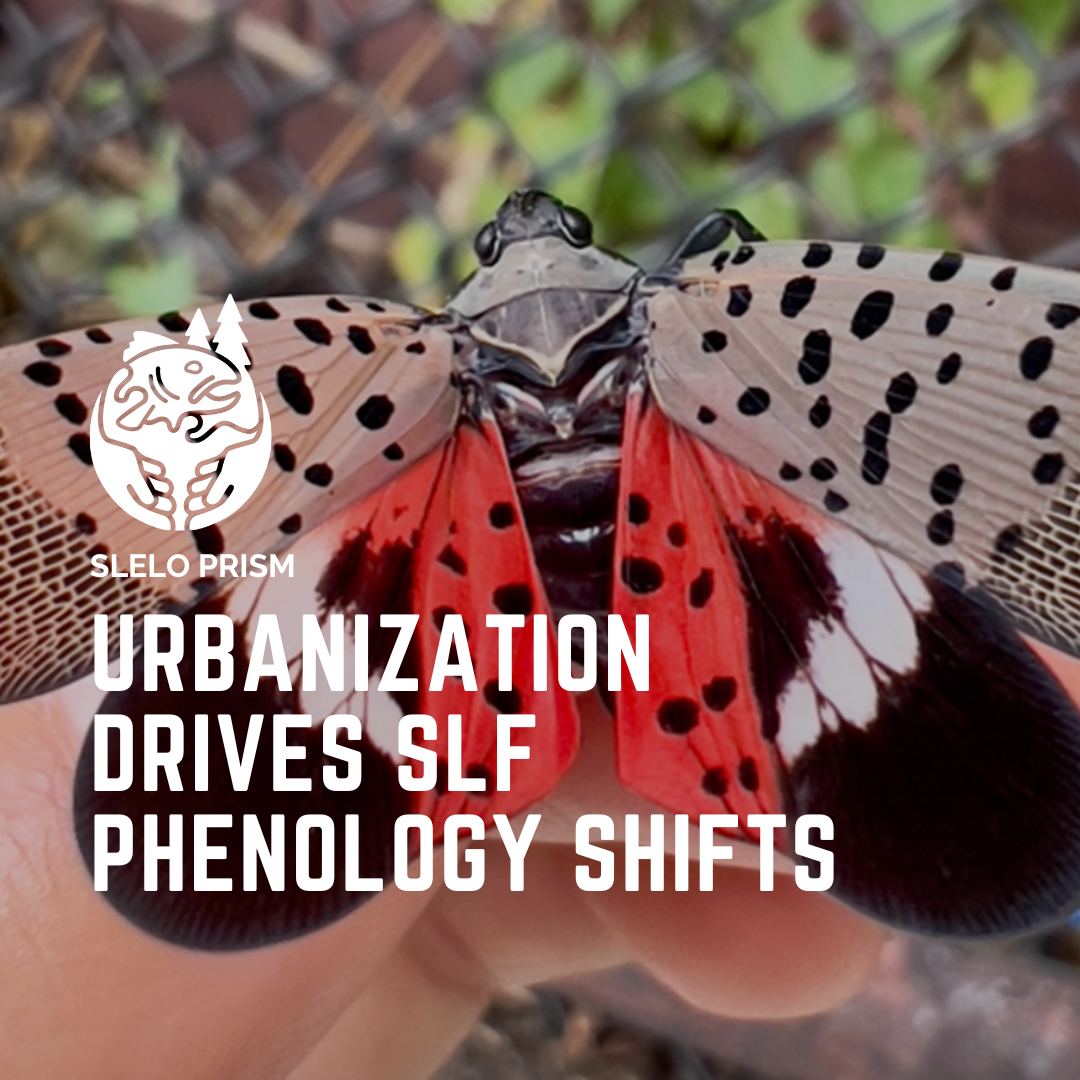This article was featured in the 2025 Winter Newsletter by Fallon Meng, revised by Kristin Winchell- New York University.
The spotted lanternfly (Lycorma delicatula), a striking yet highly invasive insect, continues its rapid expansion across the United States. New research by Hannah Owen, Fang Meng, and Kristin Winchell at New York University reveals how urban environments are reshaping the invasion dynamics of this pest, offering insights into its invasive success.
Drawing from over 19,000 observations on the citizen-science platform iNaturalist, the team leveraged public engagement to track the lanternfly’s invasion patterns. These observations provided crucial insights into the timing, distribution, and abundance of the pest. Such large-scale data, contributed by everyday people, proved invaluable in uncovering the pivotal role cities play in the lanternfly’s success.
Cities create opportunities for species like the spotted lanternfly. The urban heat island effect, where cities retain more warmth than surrounding rural areas, creates microclimates that allow the lanternfly to thrive in regions previously thought too cold. This is especially concerning as warmer temperatures facilitate earlier emergence, faster development, and extended activity periods for insects. Indeed, the researchers found that adult lanternflies are now appearing approximately 25 days earlier and staying active much longer compared to a decade ago when the invasion began in Pennsylvania. This prolonged activity window gives the pest more time to reproduce and spread, compounding its threat to ecosystems and agriculture.
In more recently invaded areas, like New York, the effects of this prolonged activity are clear with massive swarms appearing in New York City in September of 2022 and 2023. Interestingly, in regions like Pennsylvania and New Jersey, where the invasion began earlier, populations appear to have peaked and stabilized. This suggests that natural ecological pressures—such as predators, competition, or resource limitations—may eventually regulate lanternfly numbers. However, these declines do not signal the end of the invasion; rather, they mark a new phase where the pest becomes a persistent, albeit less overwhelming, part of the ecosystem.
The findings underscore the importance of focusing management efforts on urban areas, which act as both early detection zones and facilitators of spread. With cities serving as hubs for commerce and human activity, they become critical points for monitoring and intervention. Early detection systems, public awareness campaigns, and targeted urban management strategies could play a pivotal role in slowing the lanternfly’s advance and reducing its impact. As lanternflies continue to adapt and spread, understanding the interplay between urbanization and invasive species will be key to mitigating their ecological and economic consequences. This research not only highlights the threat posed by these insects but also offers a blueprint for how urban environments can be part of the solution.
Please fill out the form below to be added to our listserv and receive our seasonal newsletter, event invitations and other announcements.


